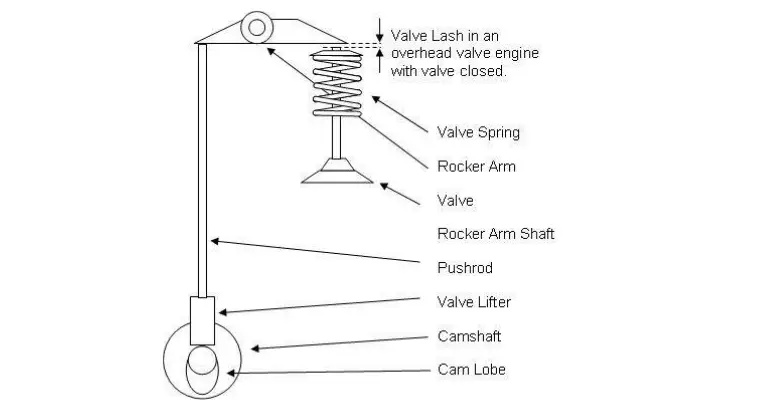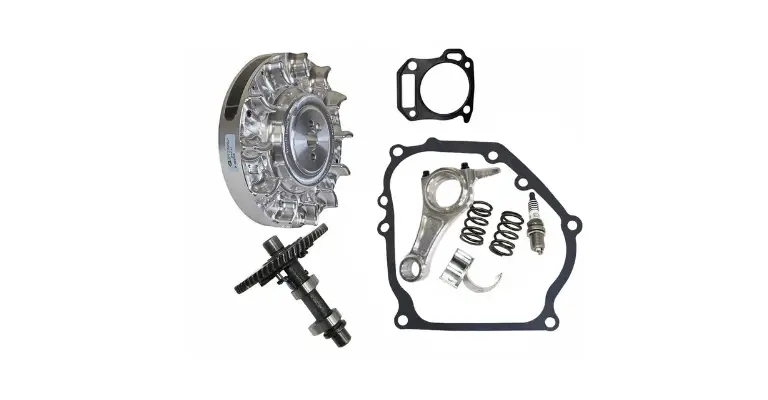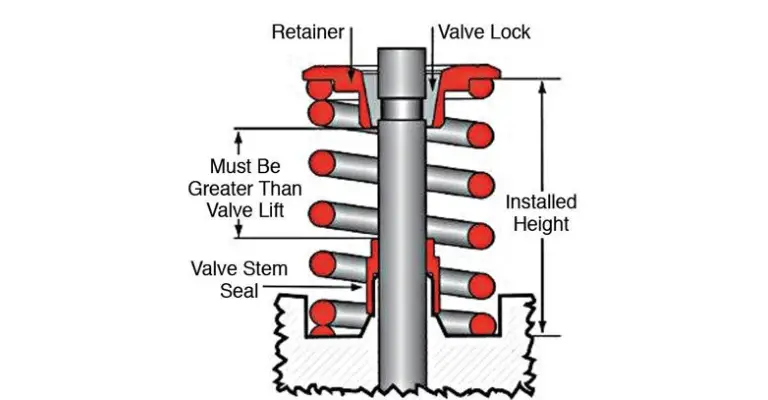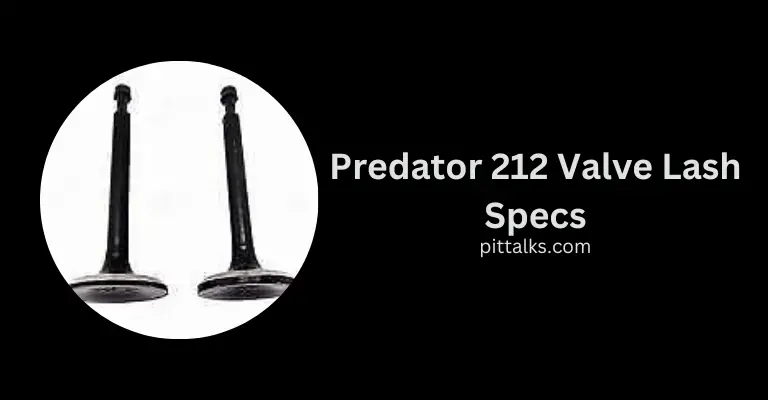Last Updated on September 28, 2023 by Pittalks
If you’ve ever felt the thrill of speeding down a track in a go-kart, you know that every component of your engine plays a pivotal role in delivering that adrenaline rush. One such component, often overlooked but crucial, is the valve lash. It’s the unsung hero ensuring your Predator 212 engine purrs like a kitten and roars like a lion when you need it to. But what exactly is valve lash, and why should you care?
In this comprehensive guide, we’ll delve deep into the world of Predator 212 Valve Lash, unraveling its mysteries, and providing you with the knowledge to optimize your engine’s performance. Whether you’re a seasoned karting pro or a newbie just dipping your toes into the world of engine mechanics, this article promises insights that could be the difference between a good ride and a great one. So, buckle up and let’s get started!
Quick Explanation and Recap of Valve Lash and The Role It Plays
Valve lash, often referred to as tappet clearance or rocker clearance, is the gap between the rocker arms and the valve stem tips. This gap allows for the expansion of engine parts as they heat up during operation. Proper valve lash ensures that the valves open and close fully, optimizing engine performance and longevity.

What’s The Recommended Valve Lash for Stock Predator 212 Engines?
For stock Predator 212 engines, the recommended valve lash is:
- Intake: .004-.006 inches
- Exhaust: .006-.008 inches
Does This Change Depending On Engine Upgrades?
Yes, engine upgrades can influence the recommended valve lash settings. However, it most cases it’s dependent on intensive engine modifications; particularly Stage 2 and above.
Stage 1 Considerations
For a Predator 212 engine with a stage 1 kit, the valve lash remains consistent with the manual’s specifications. The only factor that would change the lash specifications would be a cam swap.
Read next:
> Predator 212cc Top Speed Specs
> Best Clutch for Predator 212cc
Stage 2 Considerations
For a stage 2 kit, the specific valve lash might vary depending on the modifications and components included in the kit. It’s essential to refer to the camshaft card if you get a different cam, as the valve lash would be recommended based on the camshaft’s specifications.
Maintenance item: Predator 212cc Oil Change Guide

Key Takeaways: -Valve lash is crucial for optimal engine performance. -Engine upgrades can influence valve lash settings. -Always refer to the engine's manual or consult with a professional before making adjustments.
Here’s a video you should take into consideration. It details the proper valve lash setup but also what isseus you can run into if the valve lash is out of spec:
How To Set Valve Lash on A Predator 212cc Engine
Setting the valve lash on your Predator 212cc engine is a meticulous task, but with the right tools and a bit of patience, it’s something you can accomplish with precision. Here’s a step-by-step guide to help you navigate this process:
- Gather Necessary Tools: Before you begin, ensure you have a feeler gauge, a wrench set, and a screwdriver. These tools will be essential for making accurate adjustments.
- Safety First: Always ensure that the engine is turned off and has cooled down. Working on a hot engine can lead to burns and other injuries.
- Access the Valves: Remove the valve cover from the top of the engine. This will expose the rocker arms and the top of the valves.
- Position the Engine: Rotate the engine’s flywheel manually until the piston is at the top dead center (TDC) of the compression stroke. This means both valves should be fully closed.
- Measure Current Valve Lash: Using the feeler gauge, measure the gap between the rocker arm and the top of the valve. Slide the gauge between the two; it should fit snugly but without too much resistance.
- Adjust If Necessary: If the gap doesn’t match the recommended settings (Intake: .004-.006 inches, Exhaust: .006-.008 inches for stock engines), you’ll need to make adjustments. Loosen the lock nut on the rocker arm and turn the adjustment screw until the feeler gauge fits snugly. Once adjusted, tighten the lock nut back into place.
- Double-Check Your Work: Rotate the flywheel a couple of times and then recheck the valve lash. This ensures that the adjustments have settled and remain at the correct setting.
- Reassemble: Once you’re satisfied with the valve lash settings, replace the valve cover and ensure all bolts are tightened.
- Test the Engine: Start the engine and let it run for a few minutes. Listen for any unusual sounds. A well-adjusted valve lash should result in a smooth-running engine without any ticking or knocking sounds.
Do You Need To Replace Valve Springs At Any Point?
Over time, valve springs can wear out or lose their tension, affecting engine performance. It’s essential to inspect them regularly and replace them if they show signs of wear or damage.
How Do Heavier Valve Springs Effect Valve Lash?
Heavier valve springs are used to prevent valve float at higher RPMs. While they can help the engine operate safely at higher RPMs, they don’t necessarily change the valve lash setting. However, they might require other modifications to the engine for optimal performance.

Does The Predator Hemi Engine Have Different Lash Specs?
The Predator Hemi engine specifications are similar to the non-Hemi versions. However, always refer to the specific engine’s manual for precise valve lash settings.
Recap of What You Should Know -Proper valve lash is essential for engine performance. -Engine modifications can influence valve lash settings. -Regular maintenance and inspections are crucial for engine longevity.
Ending Thoughts
Understanding and maintaining the correct valve lash for your Predator 212 engine is crucial for its performance and longevity. Whether you have a stock engine or have made upgrades, always ensure that the valve lash is set correctly to get the most out of your engine.
Related articles:
> 5 Dreaded Problems With Predator Engines
> Predator 212cc Engine Troubleshooting Guide
> Who Makes The Predator Engine?
> Predator vs Honda Engines
> Predator 212 vs 224
FAQs and Concluding Thoughts Below
FAQs
Valve lash ensures that your engine’s valves open and close fully, optimizing performance and preventing potential damage.
While it’s possible to adjust the valve lash yourself, it’s always recommended to consult the engine’s manual or seek professional guidance to ensure accuracy.
Regular maintenance is crucial. It’s a good practice to check the valve lash during routine engine inspections or if you notice any changes in performance.
Not always. While some modifications might influence valve lash settings, others might not. Always refer to the specific modification’s documentation or consult with a professional.
If you notice a loss in engine performance, unusual noises, or if the springs appear worn or damaged during inspection, it might be time for a replacement.
Concluding
Navigating the intricate world of engine mechanics can often feel like deciphering an ancient code. Yet, as we’ve journeyed through the nuances of the Predator 212 Valve Lash, it’s evident that understanding this component is paramount for any go-kart enthusiast.
From the stock engine settings to the tweaks needed for those high-octane upgrades, ensuring the correct valve lash can be the linchpin for optimal performance. As you rev up your engine for the next race or leisurely ride, remember the silent workhorse that is the valve lash, diligently optimizing every roar and purr of your Predator 212.
Armed with this newfound knowledge, you’re not just ready to ride; you’re ready to conquer the track. Until next time, keep those engines roaring and your passion for karting burning bright!

